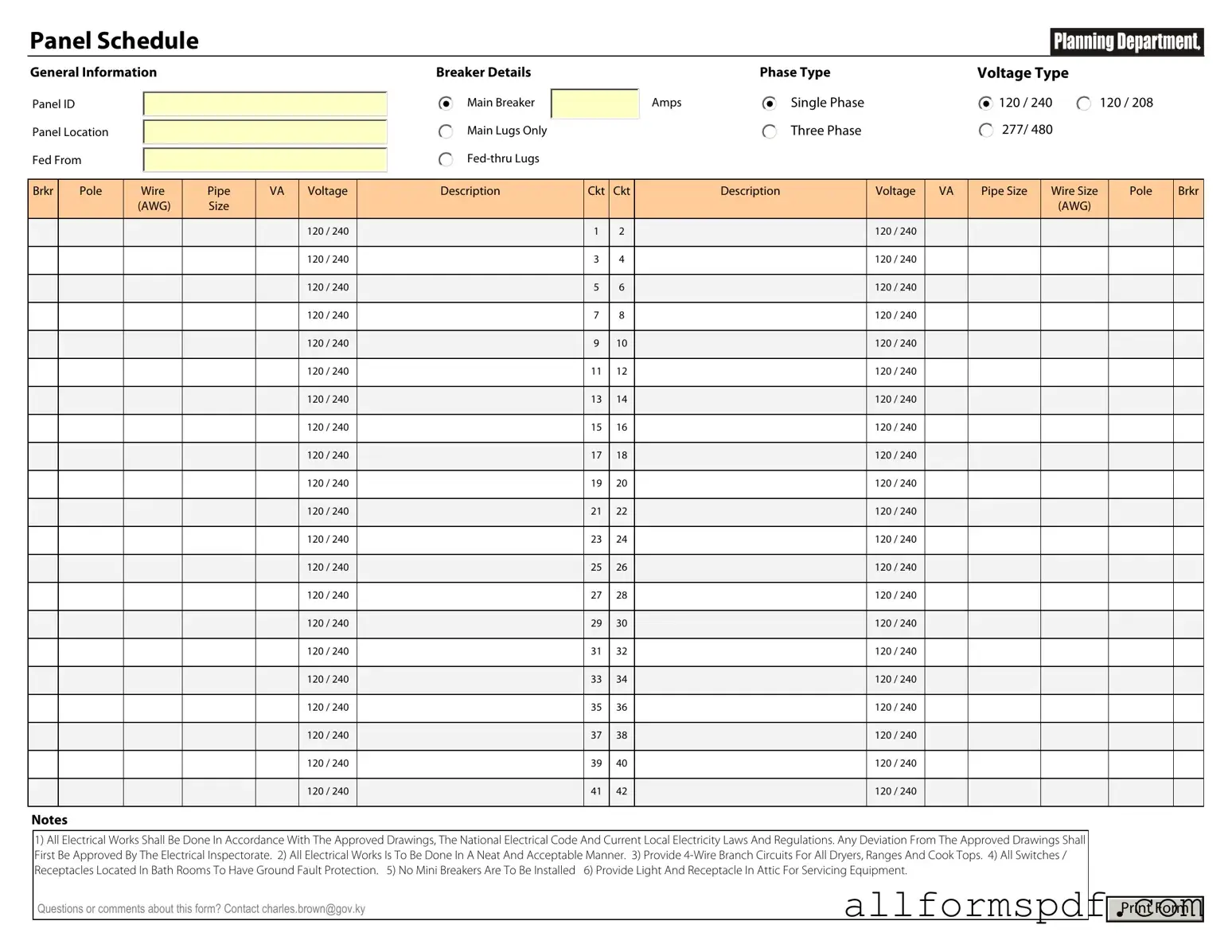Completing the Electrical Panel Schedule form is a crucial step in ensuring the safety and efficiency of electrical systems. However, individuals often make common mistakes that can lead to complications. Awareness of these pitfalls can enhance accuracy and compliance.
One frequent error is the omission of essential information. Individuals sometimes neglect to include critical details such as circuit numbers or load calculations. This lack of information can result in confusion and potential safety hazards.
Another common mistake is using incorrect or inconsistent terminology. Mislabeling circuits or failing to use standard abbreviations can lead to misunderstandings among electricians and inspectors. Consistency in language is vital for clarity.
Some individuals fail to update the form when changes occur. If modifications are made to the electrical system, such as adding new circuits or changing loads, the schedule should reflect these updates. Neglecting this can cause discrepancies that affect system performance.
Inaccurate load calculations are also prevalent. People may underestimate or overestimate the load requirements for circuits. This error can lead to overloading, which poses a significant safety risk and can damage equipment.
Another mistake involves neglecting to indicate the type of circuit. Failing to specify whether a circuit is dedicated or shared can lead to improper use and potential overload situations. Clear identification of circuit types is essential for proper management.
Some individuals do not check for compliance with local codes and regulations. Each jurisdiction may have specific requirements regarding electrical installations. Ignoring these regulations can result in fines or the need for costly revisions.
Inadequate documentation of the panel’s capacity is another issue. Individuals sometimes overlook the importance of noting the total amperage capacity of the panel. This information is crucial for assessing whether the panel can handle the current load.
Failing to include a legend or key for symbols used on the form can create confusion. Without a clear explanation of symbols, readers may misinterpret the information presented. A well-defined legend enhances the form's usability.
Lastly, individuals may rush through the process, leading to careless mistakes. Taking the time to carefully review the form before submission can help catch errors and ensure that the information is accurate and complete. Attention to detail is paramount in this critical documentation.
